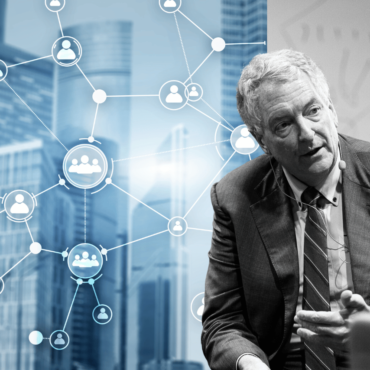
David C Forman, President: Sage Learning System, Adjunct Professor at the Graziadio School of Business and Management at Pepperdine University
Strategic Workforce Planning was once a rational and useful process. There appeared to be time to think through future scenarios and involve different stakeholders to build consensus over time. No longer. The future arrives faster than we think. The most painful example is, of course, the Coronavirus and the world’s failure to respond effectively. The devastating result of this lack of anticipation and readiness was literally life or death.
Sensing and anticipating the future has become not just a survival skill but a critical leadership capability. It is essential in a world characterized by unrelenting change and growing global interdependence. It has been said that there are two types of companies today: The quick and the dead. Organizations that do not sense, adapt, and quickly respond, will be left behind.
Valuable Insights
“Lots of companies don’t succeed over timer. What do they fundamentally do wrong? They usually miss the future.” Larry Page, Founder and former CEO, Google
“If you don’t disrupt yourself, someone else will.” Peter Diamandis
“Plans are meaningless, but planning is everything.” Dwight Eisenhower
“Failure to prepare is preparing to fail.” John Wooden
“Even if you are on the right track, you’ll get run over standing still.” Will Rogers
Lead-time Ahead Building Blocks
Being a Lead-time Ahead is a choice that leaders can make or ignore. Leaders can wait to react to new circumstances as they occur or try to anticipate and address problems before they become serious impediments. The former is easy, the latter is much more difficult; and will take conviction and even courage to move beyond reactive behaviors.
You cannot, however, just flip a switch to suddenly become proficient at identifying possible futures and improving readiness. There are four key building blocks to better preparation, being ahead of the curve, and getting out in front of the competition.
- Demonstrate a Forward Looking Mindset – Look beyond the immediate and prepare for what might come. Ask questions, be curious, keep looking ahead and take ownership. If you do not think this is important and a key component of your job, you will revert to past practices. Behaviors follow attitudes and mindsets.
- Recognize the Landscape of Impending Changes – The world has become an exceedingly small place. It is important that everyone take a broader perspective, be aware of the external factors that can impact people and organizations, and understand the bigger picture—because what happens over there, is here in a flash.
- Anticipate Possible Futures – No one can predict the future, but we can all prepare for different futures, now. There is benefit in the actual process of thinking through possible futures (Duhigg, 2016). By doing this frequently, it improves our ability to respond to different futures when they occur, even if the future that eventuates was not anticipated.
- Reduce Cultural Barriers – For real change to occur, it takes emotional strength and fortitude to confront risk, take chances and be fearless. It is not just a matter of logical and rational thought. If emotions are ignored or shortchanged, there will not be enough power to break with past practices.
Three Techniques for Anticipating Possible Futures
There are several ways to develop skills for sensing and anticipating possible futures. One technique is to work with colleagues to identify two or three likely futures that are on the horizon. This brainstorming session is useful because it gets people viewing the business in a broader lens and thinking about what can be done now to enhance readiness. Three futures, for example, that might appear on many lists are: 1) A new spike in Covid-19, 2) Climate change and resource scarcity, and 3) The rise of Artificial Intelligence and smart systems. Getting the team to focus on these scenarios—and what to do about them– once a month, or even once a quarter, can be very beneficial.
But unstructured brainstorming sessions can overlook critical factors that might not have occurred to participants. External factor frameworks are useful for helping to ensure that a variety of influencers are considered. There are several popular frameworks, including PES-TLE-HES which has recently been updated to include critical contemporary factors (political, economic, social-technical, legal, environmental-health, ethical and security). Using this framework, factors that would probably emerge are cyber security, speed of economic recovery, tariffs, legal restrictions, changing consumer preferences or increased social tensions.
Another technique focuses on the societal megatrends that will likely impact not just companies or industries, but everyone on the planet. PwC has identified five such global megatrends. A useful exercise is to assign each megatrend to a group of colleagues and ask them to delineate the possible impacts; and from this large list, pick the three to five that are most likely to occur. Once this is done, then identify the skills and capabilities needed in the workforce to address these challenges.
| Societal Megatrend | Possible Impact | Likely Impact | Developmental Actions |
| Rapid Urbanization | |||
| Climate Change and Resource Scarcity | |||
| Shifts in Global Economic Power | |||
| Demographic and Social Change | |||
| Technical Breakthroughs |
Figure 1: Societal Megatrend Scenario Exercise
The fundamental dilemma is that it takes skill, foresight, and strength to delve into the unknown, while, at a personal level, it is safer and more comfortable to wait and respond to what has occurred. But, as we have seen, being reactive and short-sighted often has disastrous impacts on industries, organizations, and their continued viability. A bigger picture view is needed in such an interconnected and turbulent world. And it is possible to sense and anticipate possible futures if we accept the risks, think differently, continuously refine this capability, and embrace the opportunity.
“The greatest danger in times of turbulence is not the turbulence. It is to act with yesterday’s logic.” Peter Drucker
Written by: Dave Forman
HR Strategy Leadership Workforce Planning
Previous post

- 773
labelArticles today2022.02.09.
Dave Ulrich: Clarifying Terms in Human Resource “HR”- A Blueprint for Action
Dave Ulrich- Rensis Likert Professor of Business, Ross School of Business, University of Michigan Words matter. They shape ideas that lead to action. Words may vary (e.g., a strong [...]
Similar posts

labelArticles today2024.07.24.
AI-Powered HR: Strategic Benefits and Practical Applications

labelArticles today2024.06.24.









Post comments (0)